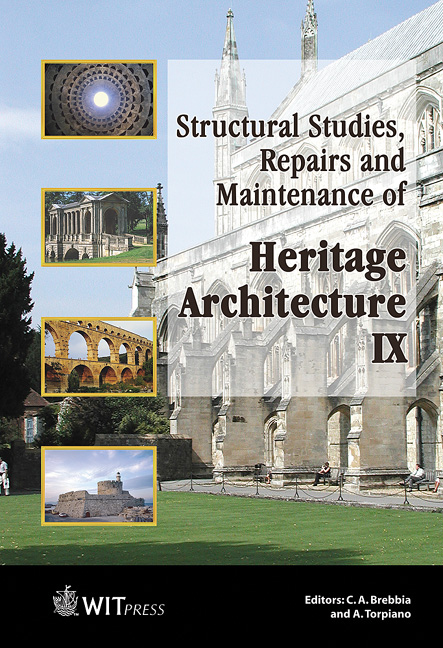The Use Of Computerized Energy Simulations In Assessing Thermal Comfort And Energy Performance Of Historic Buildings
Price
Free (open access)
Transaction
Volume
83
Pages
10
Published
2005
Size
616 kb
Paper DOI
10.2495/STR050561
Copyright
WIT Press
Author(s)
A. Geva
Abstract
The balance between preservation objectives and the thermal needs of an historic structure is addressed in different publications that integrate the general recommendations of ‘design with climate’ with specific guidelines set forth by the US Secretary of Interior’s Standards and Guidelines for Rehabilitation of Historic Buildings. These accepted recommendations serve as the basis for morphological qualitative analyses of thermal comfort of historic buildings. To augment these analyses, this paper introduces a systematic quantitative approach to determine the energy needs of these buildings and to develop energy conservation strategies in their retrofitting. Using a computerized energy simulation program the study proceeds in three major steps: (a) evaluation of the thermal comfort and energy performance of the target building in its original historic and its current conditions; (b) development of energy strategies to improve thermal conditions in the historic building, while maintaining the building’s historic integrity; and (c) evaluation of these strategies. This paper demonstrates the utility of ENER-WIN – an hour by hour energy simulation program in testing thermal comfort and energy performance of three historic buildings: the 1868 St. Louis Catholic Church in Castroville, Texas, USA; Frank Lloyd Wright’s 1905 Unity Temple in Oak Park, Illinois, USA; and a 1936 Bauhaus Apartment Building in Tel Aviv, Israel. Keywords: energy simulations; thermal comfort; energy conservation strategies; historic buildings. 1 Introduction The balance between preservation objectives and thermal needs of a historic structure is addressed in different publications that integrate the general
Keywords
energy simulations; thermal comfort; energy conservation strategies; historic buildings.




